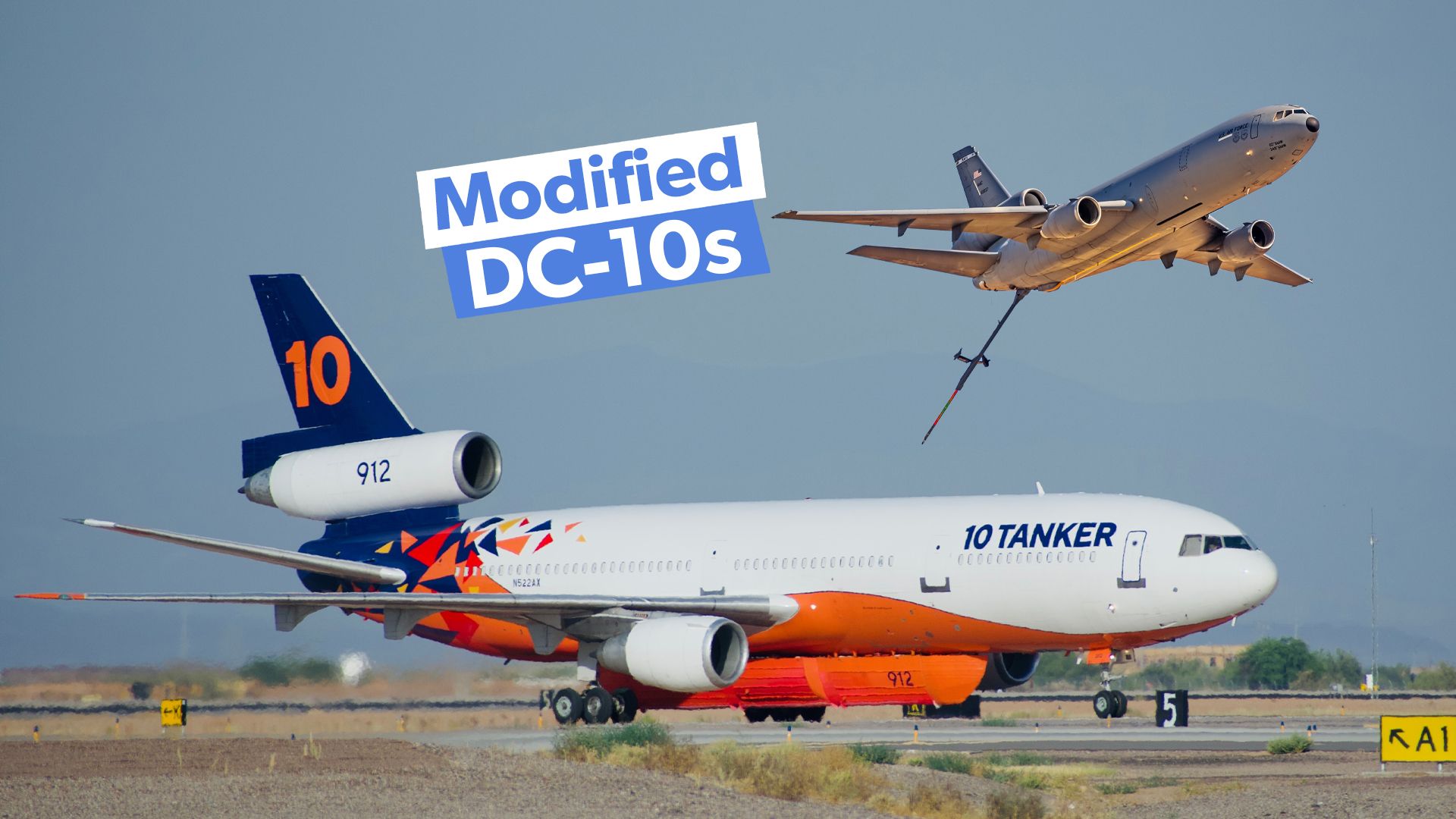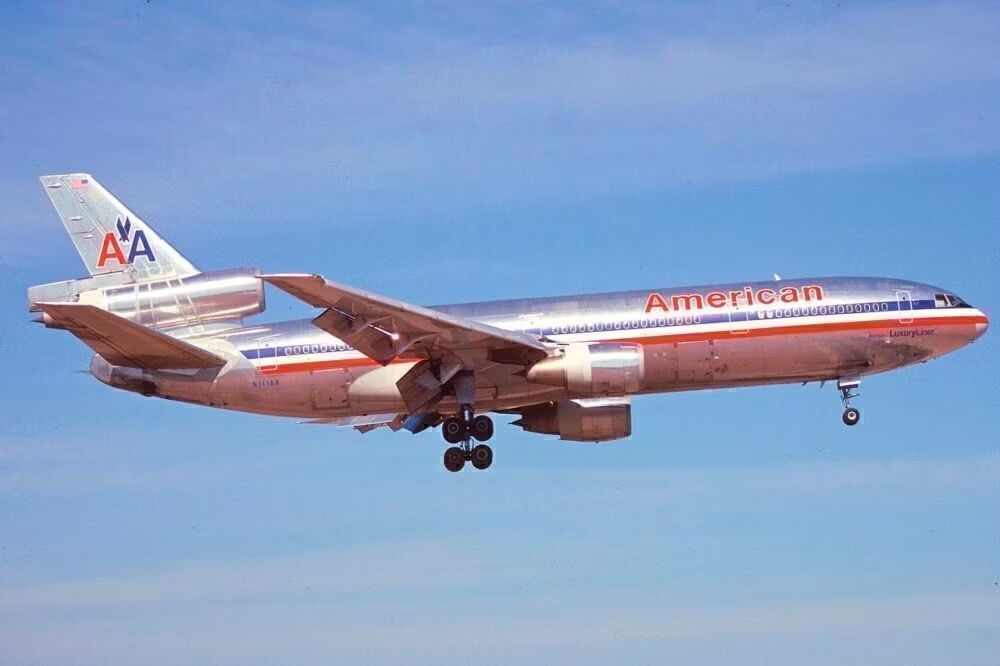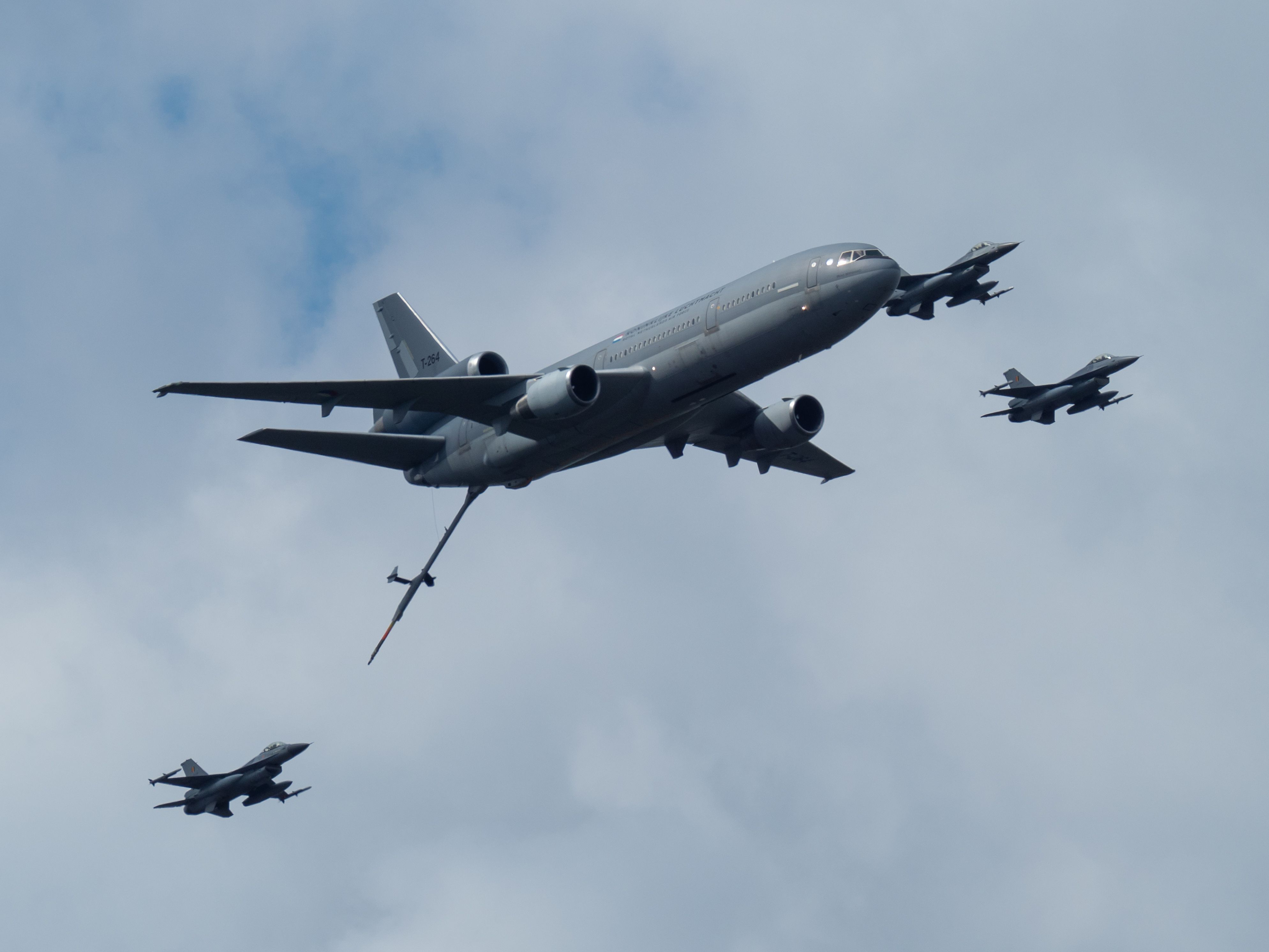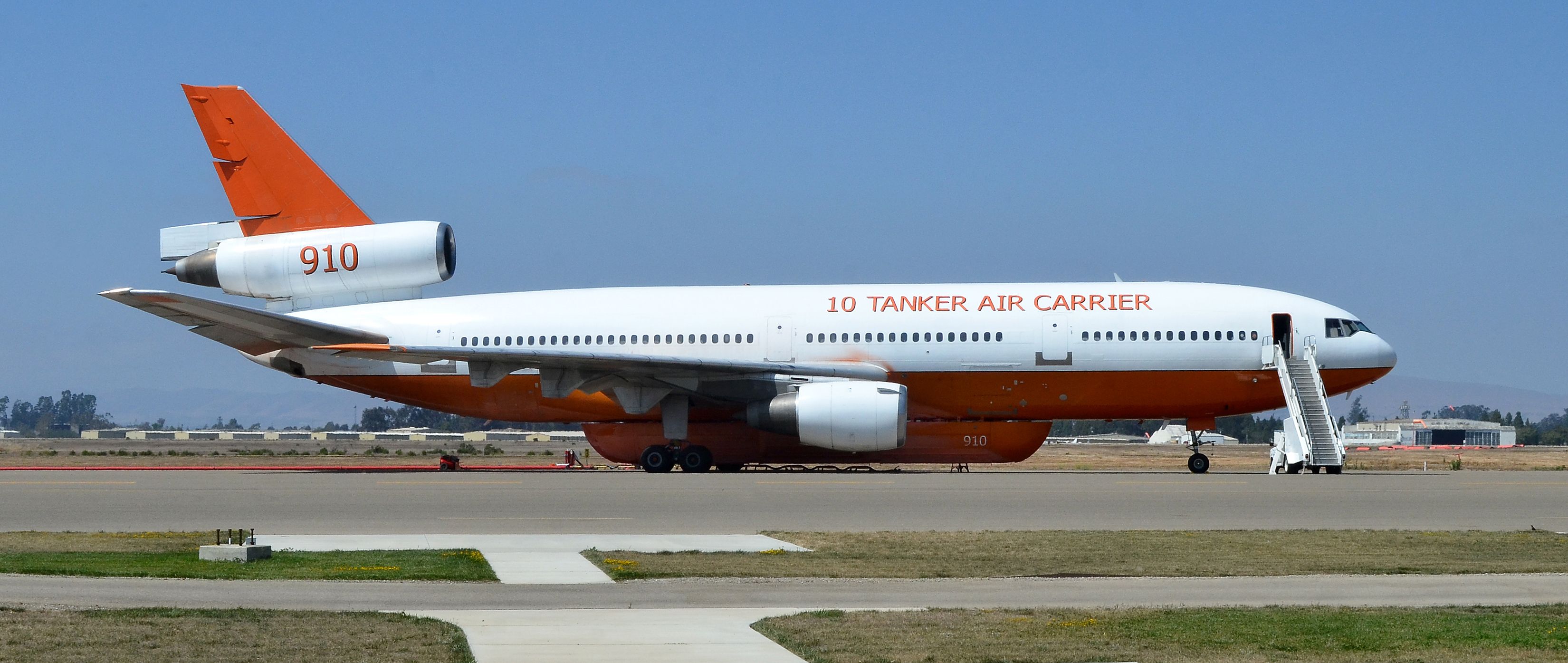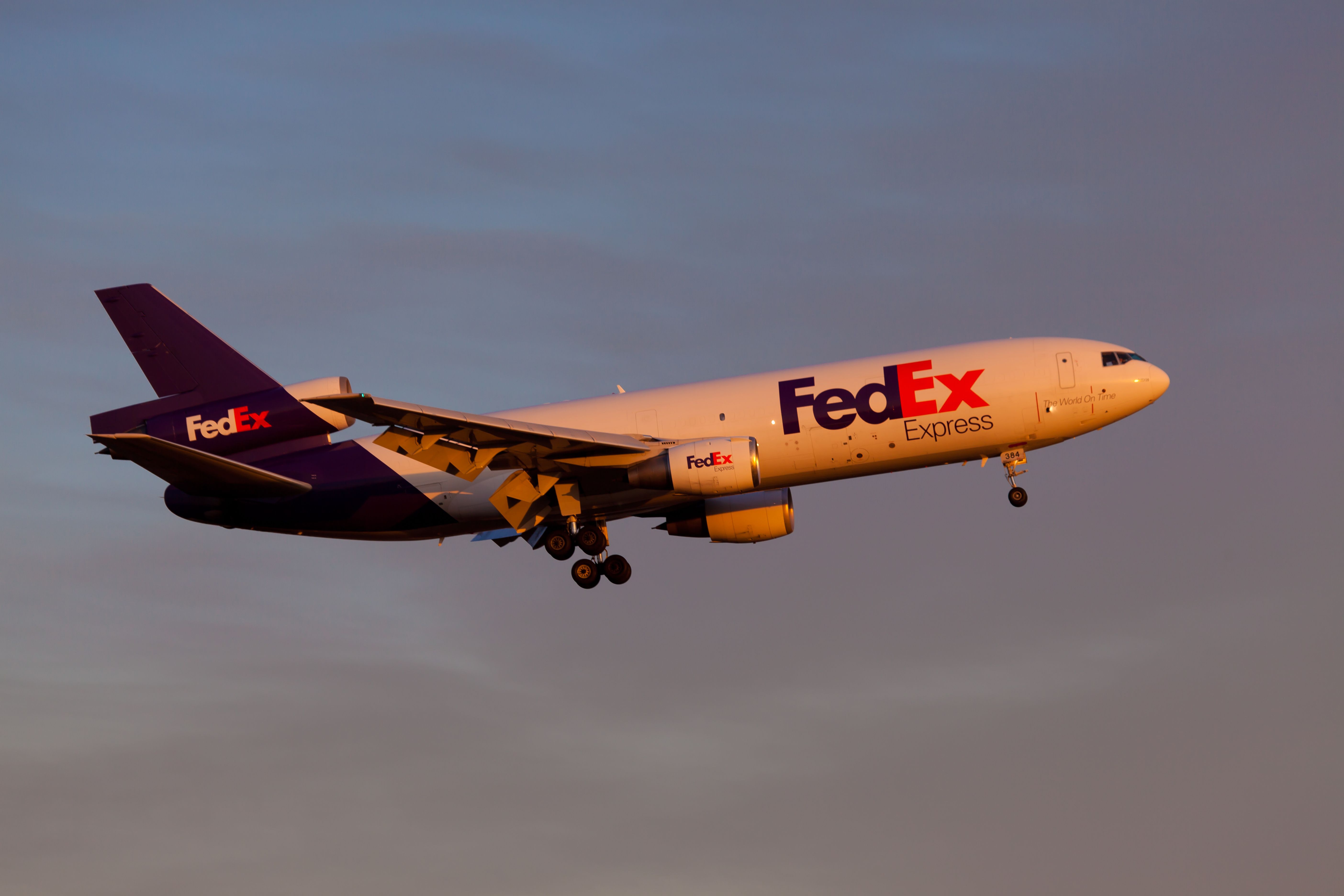Summary
- The McDonnell Douglas DC-10 was designed to replace the DC-8 and offer expanded capacity for long-haul flights while still being able to operate at airports with shorter runways.
- The DC-10 had various variants, including the KC-10 refueling tanker and the DC-10 Air Tanker used for aerial firefighting.
- The MD-10 program allowed for the retrofitting of the DC-10 with a new flight deck, resulting in cost savings and improved efficiency.
Performing its maiden flight on August 29th, 1970, the McDonnell Douglas DC-10 rapidly became an icon of commercial aviation, with a total of 386 produced over a 20-year period. The logic behind the DC-10 was to replace the DC-8 narrowbody aircraft, allowing carriers to expand capacity in long-haul markets.
Smaller than the Boeing 747, the then-largest passenger aircraft, the DC-10 still offered the chance to perform transcontinental flights and to operate at airports with runways that were too short for the Queen of the Skies.
Airlines could choose from three different variants of the McDonnell Douglas DC-10. The -10 series was mainly used for domestic services, with a maximum range of 3,500 miles (5,632 kilometers), while the -30 and -40 series offered an extended range to operate intercontinental flights.
McDonnell Douglas designed and developed a passenger-cargo convertible version of the DC-10, while the KC-10 served as an aerial tanker.
Although the McDonnell Douglas DC-10 and its variants are no longer used for commercial passenger services today, it is still operated for cargo and air force operations. What are three of the most unique modified versions of the DC-10?
1
KC-10 Extender
The KC-10 Extender was developed as the military variant of the MD-10 (more on that later) convertible freighter and made its first flight on July 12th, 1980. The aim of this aircraft was to offer large cargo payloads over an extended range while also serving as an aerial refueling tanker.
The additional fuel is carried in large bladder cells in the lower half of the fuselage, where cargo and luggage would typically be stored on a passenger DC-10. The front of the fuselage can seat up to 75 passengers and accommodate cargo on pallets or open cargo, for instance, jet engines.
Photo: Alexandre Tziripouloff | Shutterstock
The US Air Force received 60 KC-10 Extenders between 1980 to 1990, many of which remained in active service for several decades. Over the years, the KC-10 Extenders carried out hundreds of key missions, including:
- The Operation Allied Force against the government of Yugoslavia in 1999
- Peacekeeping missions guarding the skies above the US as part of Operation Noble Eagle
- US military operations in both Afghanistan and Iraq.
However, in January 2023, the US Air Force announced that all KC-10s would be retired by September 30th, 2024.
2
DC-10 Air Tanker
The McDonnell Douglas DC-10 Air Tanker is a modified version of the airliner used for aerial firefighting. The aircraft features three water tanks offering a capacity of up to 12,000 gallons (45,424 liters) of fire retardant or water.
The Federal Aviation Administration (FAA) issued a Supplemental Type Certificate in March 2006, formally allowing the modification of the DC-10 as an aerial liquid dispersant.
Photo: Bill Morson | Shutterstock
It takes just about eight minutes to fill all three liquid tanks of the McDonnell Douglas DC-10 Air Tanker, while eight seconds is the amount of time required to release the fire retardant or water. When released, the liquid covers an area of up to 91.44 meters wide and 1.6 kilometers long.
The McDonnell Douglas DC-10 Air Tankers have carried out firefighting missions on behalf of the US Forest Service (USFS), and in their first year of operations alone, attended six fires in California and one in Washington. The aircraft have also supported firefighting operations in:
- Texas
- New Mexico
- Oregon
- Canada
- Australia.
3
MD-10
After McDonnell Douglas was acquired by Boeing, it rolled out the MD-10, giving the tri-engined aircraft another lease of life. Indeed, the program allowed airlines to retrofit the DC-10 with a new, advanced-technology flight deck. The modifications included:
- The advanced common flight deck (ACF), which brought about substantial cost savings by turning the cockpit from a three- to a two-person flight deck.
- The aircraft’s weight was reduced by almost 500kg.
- At the same time, labor and maintenance savings were achieved thanks to the enhanced commonality with the MD-11, including same-type ratings for pilots flying both jets.
Photo: Eliyahu Yosef Parypa/Shutterstock
FedEx was the launch customer for the McDonnell Douglas MD-10. The conversion program entailed converting passenger-configured DC-10s into the freighter version. The conversion program started in February 1997 and took approximately 120 days per aircraft. The program’s second phase included installing the ACF, the liquid crystal display flight deck based on the integrated glass design in the MD-11.
When it comes to the McDonnell Douglas DC-10, Northwest Airlines was the final US carrier to operate commercial services with the aircraft in January 2007, while globally, Biman Bangladesh Airlines continued to fly the DC-10 until February 2014. The aircraft’s final scheduled commercial flight was from Dhaka (DAC) to Birmingham (BHX).
Over the years, the McDonnell Douglas DC-10 was involved in 32 hull-loss incidents, which resulted in the deaths of more than 1,200 passengers and crew members. The 1970s was a particularly dark period in the aircraft’s history.
In March 1974, Turkish Airlines Flight 981 became the deadliest air crash in history at the time when a cargo door blowout caused it to crash near Ermenonville in France, killing all 346 people onboard. Then, in May 1979, American Airlines Flight 191 crashed on take-off from Chicago O’Hare International Airport (ORD), killing all 271 people onboard and two on the ground

